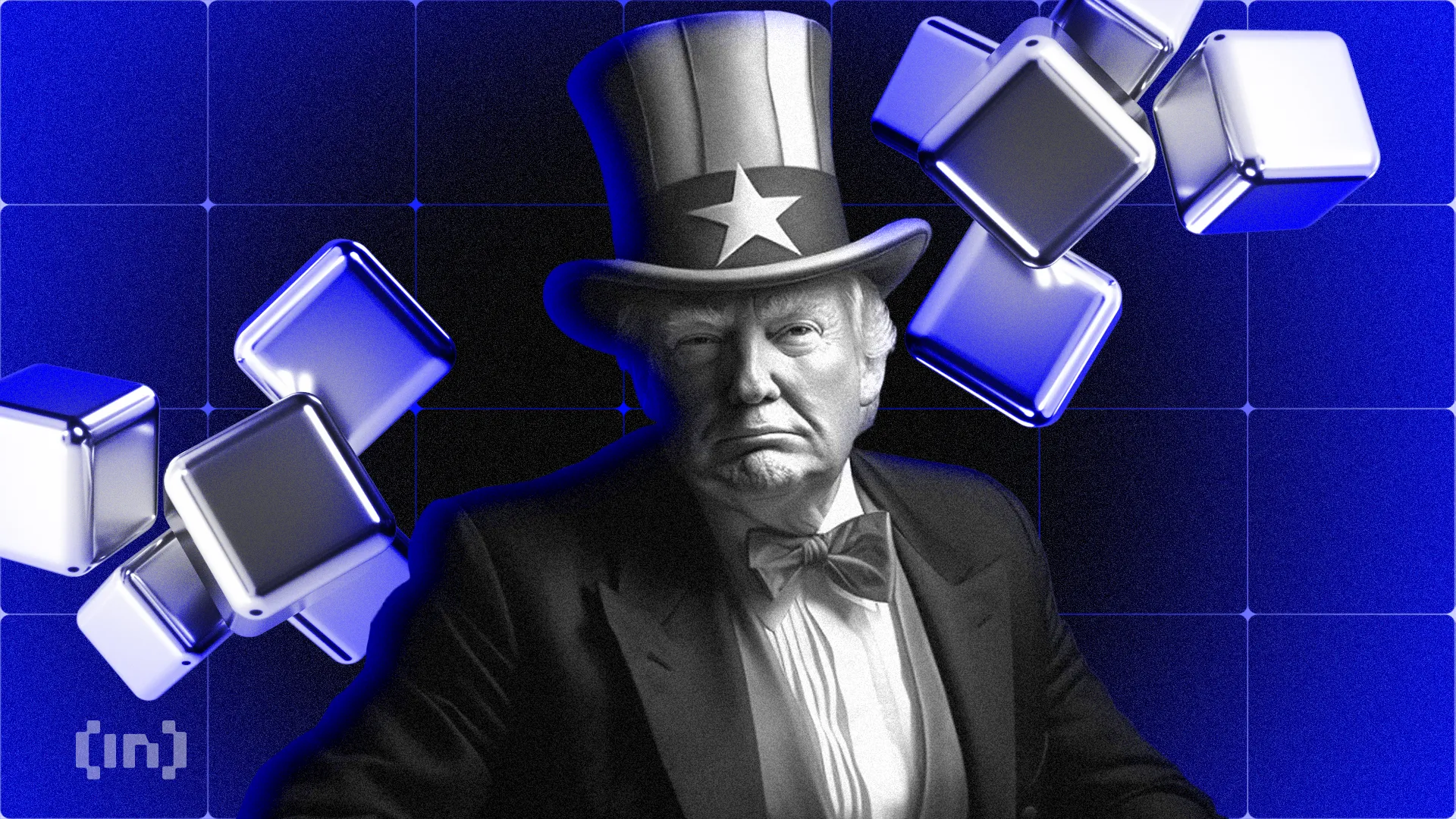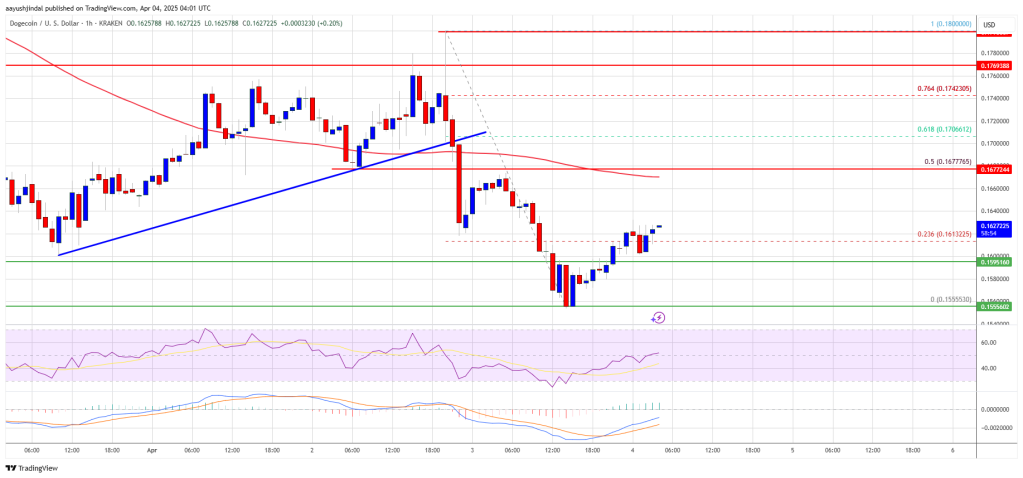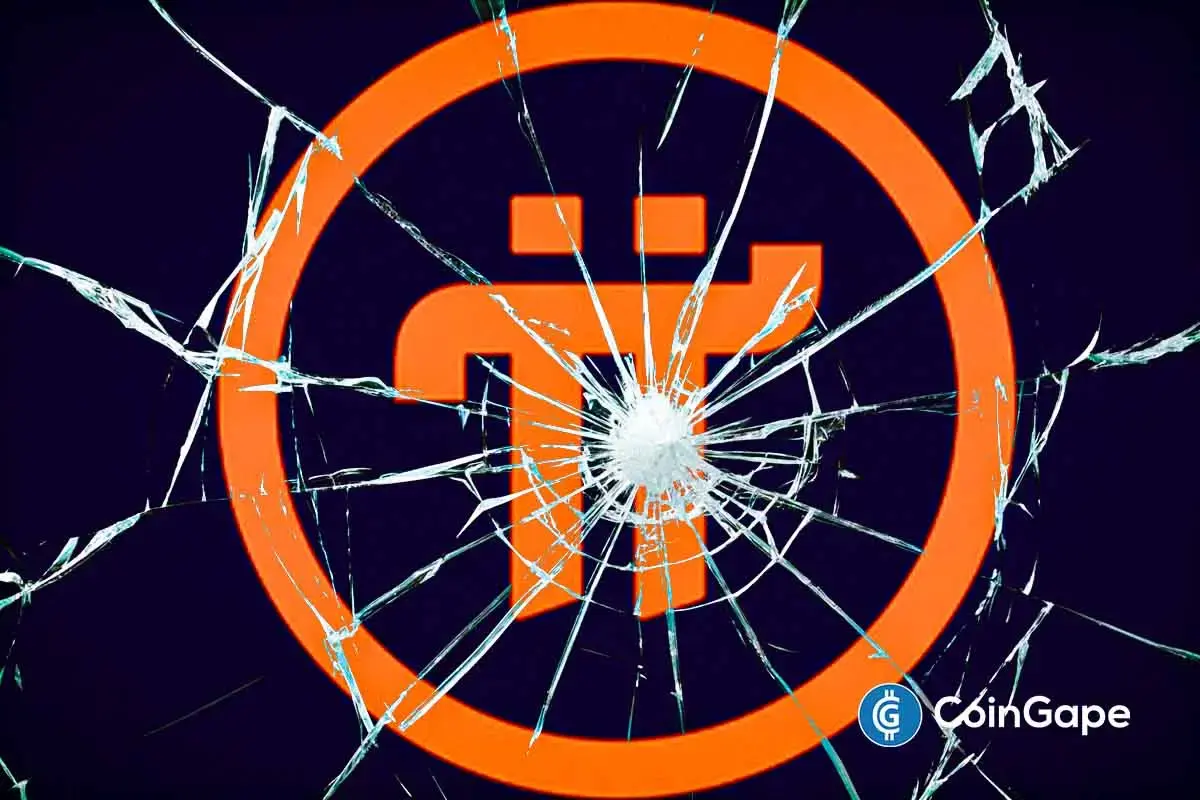Market
WazirX Recovery, Nvidia Robots, and More


This week, the crypto market saw major developments, including Donald Trump’s Bitcoin plan announced at the Bitcoin 2024 Conference, WazirX’s controversial hack recovery strategy, and Nvidia’s advancements in humanoid robotics.
These events showcase the ever-changing nature of the crypto industry, eliciting diverse responses from global experts and stakeholders.
Donald Trump’s Bitcoin Strategy: A Game-Changer or Economic Gamble?
During the Bitcoin 2024 Conference in Nashville, former President Donald Trump announced his intention to prevent the US government from selling its Bitcoin (BTC) holdings. This policy plan has sparked diverse reactions from industry experts.
For instance, Anthony Scaramucci, founder of SkyBridge Capital, praised Trump for pushing Bitcoin into the political spotlight and emphasized the need for bipartisan support for cryptocurrency. However, Scaramucci also raised concerns about the broader implications of Trump’s approach. He acknowledged the risks associated with Trump’s policies despite his agreement on the crypto front.
Read more: 7 Best Crypto Exchanges in the USA for Bitcoin (BTC) Trading
Meanwhile, renowned economist Peter Schiff criticized the ‘never sell your Bitcoin’ ideology. Schiff questioned the practicality of retaining Bitcoin without ever selling it. He argued that such a strategy could be economically flawed.
“If that’s true and no one who buys Bitcoin ever sells any, what’s the point of owning it? What’s the appeal of living in poverty, dying with a big stack of Bitcoin, with successive generations of heirs repeating the process?” he said.
Trump’s statement also prompted reactions from outside the US. Hong Kong legislator Johnny Ng said he would explore the feasibility of adding Bitcoin to the city’s financial reserves.
Ng noted that integrating Bitcoin into national or regional financial reserves is worth exploring, given BTC’s increasing global acceptance and its perception as “digital gold.” However, he pointed out that such measures needed to comply with regulatory standards.
Crypto Exchange WazirX’s Recovery Plan Faces Backlash
WazirX, one of the prominent Indian crypto exchanges, shared a controversial plan to distribute a $230 million loss among its users following a major security breach. Earlier in July, the Mumbai-based company witnessed a cyberattack that compromised nearly half of its reserves, marking India’s largest crypto heist to date.
To handle the aftermath, WazirX intends to re-establish operations within a week and introduce a “fair and transparent socialized loss strategy.” This strategy involves adjusting customer portfolios, returning 55% of holdings, and locking the remaining 45% in USDT-equivalent tokens. Importantly, this impacts all users, even those whose assets were not directly stolen.
WazirX provides two recovery options. Option A prioritizes trading and holding assets and restricts withdrawals, while Option B allows trading and withdrawals but places users at a lower priority for recovery. Users can switch between these options before making any trades or withdrawals.
The exchange founder, Nishal Shetty, addressed the community, stating the firm did not insure customer funds as viable options were unavailable. He warned that recovery could take years and might only partially restore losses.
Critics, including policy expert Nikhil Pahwa, argue that WazirX’s actions exceed typical exchange responsibilities, essentially redistributing assets among users. Customers have also questioned why the company isn’t using its profit reserves to mitigate losses.
SEC Removes Solana, Cardano, and Filecoin from the Security Tokens List
On July 30, the US Securities and Exchange Commission (SEC) modified its lawsuit against crypto exchange Binance. The revision notably removes Solana (SOL), Cardano (ADA), and Filecoin (FIL) from being classified as securities. These tokens are among the 67 the SEC has previously categorized as securities.
This legal adjustment is part of a case initially filed in June 2023. The recent response to the court’s order, dated July 9, 2024, outlines the SEC’s intention to modify its stance regarding the “Third Party Crypto Asset Securities” in its opposition to Binance’s dismissal motion.
This change in the SEC’s approach eliminates the immediate need for the court to determine if the tokens in question meet the criteria for being classified as securities. This decision could indicate a significant shift in how certain cryptocurrencies are perceived and regulated in the US. It may clarify the regulatory status of many altcoins, which exist in a gray area between utility and security. Additionally, it could pave the way for the approval of the next exchange-traded fund (ETF).
The crypto community members have also reacted positively to the SEC’s revisions, especially regarding optimistic price targets for Solana.
Nvidia’s Robotic Innovations: What’s Next?
Technology company Nvidia announced it provides infrastructure for the next generation of humanoid robotics. It will serve global leaders in robot manufacturing, AI model development, and software-making industries.
The next generation of humanoid robots will redefine human-machine interaction possibilities, paving the way for a future where intelligent machines work alongside humans seamlessly. The American multinational corporation offers services, models, and computing platforms to accelerate global-scale humanoid development, empowering developers to train robots using human demonstration data.
“The next wave of AI is robotics, and one of the most exciting developments is humanoid robots. We’re advancing the entire Nvidia robotics stack, opening access for worldwide humanoid developers and companies to use the platforms, acceleration libraries, and AI models best suited for their needs,” Jensen Huang, CEO of Nvidia, stated.
Read more: How Will Artificial Intelligence (AI) Transform Crypto?
Nvidia positions itself to catalyze transformative changes in various sectors as humanoid robots become increasingly prevalent in healthcare, manufacturing, and service industries. The firm will play a pivotal role in shaping the future of AI, introducing a new era of innovation.
Although indirectly related, Nvidia’s innovation and development often catalyze AI-related cryptocurrencies. However, the recent announcement failed to push the broader AI-related tokens, such as NEAR, FET, and RNDR, due to the larger influence of Bitcoin’s price at that time, which caused the wider crypto market to decline.
Disclaimer
In adherence to the Trust Project guidelines, BeInCrypto is committed to unbiased, transparent reporting. This news article aims to provide accurate, timely information. However, readers are advised to verify facts independently and consult with a professional before making any decisions based on this content. Please note that our Terms and Conditions, Privacy Policy, and Disclaimers have been updated.
Market
What to Expect on May 7

The highly anticipated Pectra upgrade will launch on the Ethereum (ETH) mainnet on May 7, 2025, after overcoming a series of technical challenges and delays in the testnet phase.
Ethereum developers announced the date during the All Core Developers Consensus (ACDC) meeting on April 3, 2025.
Pectra Upgrade Countdown Begins
The upgrade was initially slated for a tentative mainnet launch on April 30. However, Ethereum developers have postponed the launch by one week.
“We’ll go ahead and lock in May 7 for Pectra on mainnet,” Ethereum Foundation researcher Alex Stokes said.
In preparation for this, Stokes confirmed that client releases will be made available by April 21, ensuring that all users have the necessary updates and tools ahead of the mainnet launch. On April 23, a detailed blog post outlining the Pectra mainnet will be published.
The Pectra upgrade will introduce 11 Ethereum Improvement Proposals (EIPs) to enhance various aspects of the network. Notably, three EIPs are dedicated to improving the validator experience.
The first is EIP-7251. This will increase the staking limit for validators from 32 ETH to 2,048 ETH per validator. This change aims to enhance capital efficiency for large stakers and staking pools.
“This simplifies the staking experience, allowing users to manage multiple validators under one node instead of several,” an analyst remarked.
Moreover, EIP-7002 introduces execution-layer triggerable withdrawals, giving validators more control. Meanwhile, EIP-6110 reduces the deposit processing delay from about 9 hours to just 13 minutes.
The upgrade will also include EIP-7702, a major step toward account abstraction. It allows Externally Owned Accounts (EOAs) to gain smart contract functionality while maintaining simplicity. This enables features like transaction batching, gas sponsorship (where third parties pay fees), passkey-based authentication, spending controls, and asset recovery mechanisms.
Finally, the upgrade increases blob capacity through EIP-7691. In addition, EIP-7623 helps manage the increased bandwidth requirements. These updates aim to make Ethereum more scalable, efficient, and user-friendly.
It is worth noting that the road to the mainnet launch has not been without hurdles. Two previous tests on the Holesky and Sepolia test networks failed to finalize properly. However, Pectra achieved full finalization on the Hoodi testnet on March 26, marking a significant milestone toward the successful deployment of the upgrade.
Despite the technical progress, ETH continues to face market challenges.

Data from BeInCrypto shows that ETH dropped 4.8% over the past week, with weekly losses extending to 17.1%. At the time of writing, the altcoin was trading at $1,822, reflecting a small daily gain of 0.8%.
Disclaimer
In adherence to the Trust Project guidelines, BeInCrypto is committed to unbiased, transparent reporting. This news article aims to provide accurate, timely information. However, readers are advised to verify facts independently and consult with a professional before making any decisions based on this content. Please note that our Terms and Conditions, Privacy Policy, and Disclaimers have been updated.
Market
XRP Futures and Illinois Lawsuit Relief

Coinbase filed with the US Commodity Futures Trading Commission (CFTC) to launch futures contracts for Ripple’s XRP token.
The move comes after a positive development for the crypto derivatives market in the US, reflecting shifting regulatory ties in the country.
Coinbase Files for XRP Futures Trading With CFTC
Coinbase Derivatives has submitted a filing to self-certify XRP futures. It will provide a regulated, capital-efficient means for market participants to gain exposure to XRP. The new contract could go live as soon as April 21.
“We’re excited to announce that Coinbase Derivatives has filed with the CFTC to self-certify XRP futures – bringing a regulated, capital-efficient way to gain exposure to one of the most liquid digital assets. We anticipate the contract going live on April 21, 2025,” read the announcement.
Meanwhile, the official filing indicates that the XRP futures contract will be a monthly cash-settled and margined contract trading under the symbol XRL.
Each contract represents 10,000 XRP and will be settled in US dollars. Trading will be available for the current month and two subsequent months. As a protective measure, trading will be temporarily halted if the spot XRP price moves more than 10% within an hour.
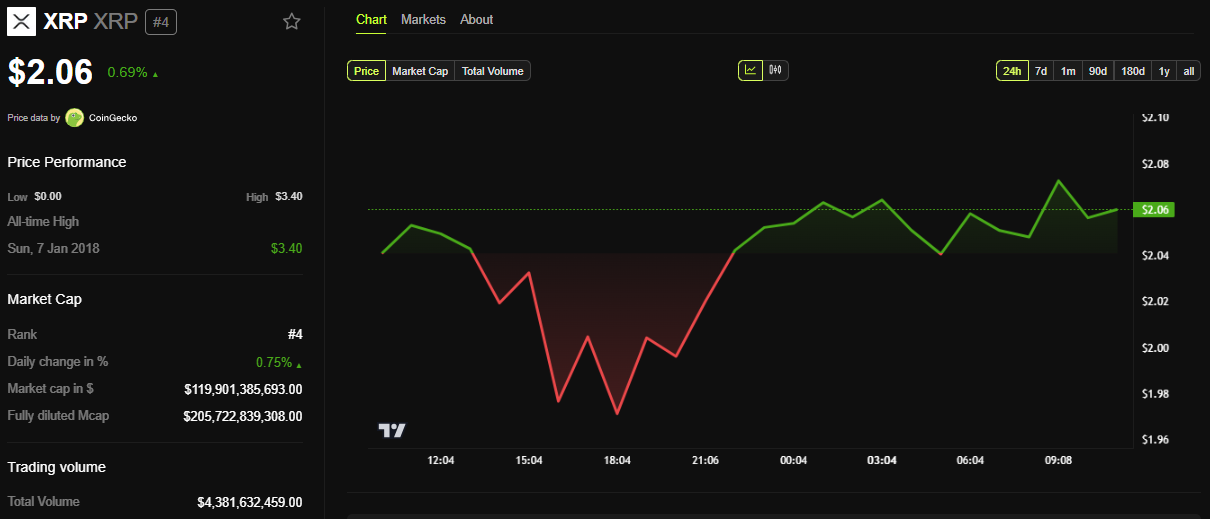
The Coinbase Exchange also confirmed that it has engaged with Futures Commission Merchants (FCMs) and other market participants. Both references reportedly expressed support for the launch.
However, Coinbase is not the first US-based exchange to introduce regulated XRP futures. In March, Chicago-based Bitnomial launched what it advertised as the country’s first CFTC-regulated XRP futures contract.
For Coinbase, however, the boldness comes after the CFTC eased key regulatory hurdles for crypto derivatives trading. As BeInCrypto reported, this signaled a more accommodating stance towards the sector.
“Pursuant to Commodity Futures Trading Commission (“CFTC” or “Commission”) Regulation 40.2(a), Coinbase Derivatives, LLC (the “Exchange” or “COIN”) hereby submits for self-certification its initial listing of the XRP Futures contract to be offered for trading on the Exchange…,” an excerpt in the filing indicated.
This suggests that the commodities regulator’s shift, revoking previous crypto-related guidelines, may boost institutional confidence. For XRP, this development bolsters confidence in the asset’s previously contentious status following Ripple’s recent regulatory breakthrough.
“Coinbase Derivatives’ filing with the CFTC to self-certify XRP futures aims to legitimize XRP trading by offering a regulated, capital-efficient product for investors,” one user remarked.
The futures contract might also help the odds of XRP ETF approval. Recently, the SEC delayed several applications to create one, and its status is in limbo.
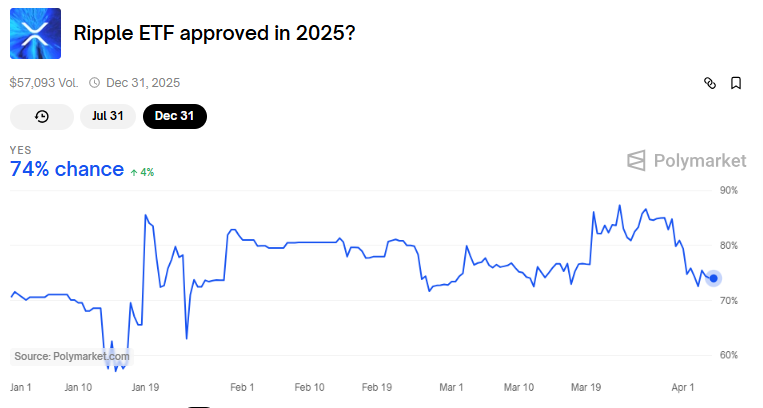
Data on Polymarket shows bettors see a 74% chance for XRP ETF approval in 2025 and a more modest 34% by July 31.
Regulatory and Legal Developments Favor Coinbase
Elsewhere, the timing of this filing aligns with recent favorable regulatory developments for Coinbase. Reports suggest Illinois intends to drop its lawsuit against the exchange over its staking services.
Up to 10 states filed a lawsuit against Coinbase in June 2023 alleging that its staking program constituted unregistered securities offerings.
This recent development makes Illinois the fourth state to withdraw legal action against Coinbase. Vermont, South Carolina, and Kentucky also dismissed their cases on March 13, 27, and 31, respectively.
However, the cases remain active in Alabama, California, Maryland, New Jersey, Washington and Wisconsin.
These legal retreats coincide with the US SEC’s (Securities and Exchange Commission) February decision to abandon its federal lawsuit against Coinbase. BeInCrypto reported that this development marked a broader shift in the regulatory approach under the current administration.
“Regulators are losing steam, and Coinbase is stacking quiet courtroom wins. Staking’s future in the US might just be back on track,” a user commented.
Illinois’ decision to drop its lawsuit comes as the state advances a Bitcoin strategic reserve bill. Specifically, Illinois State Representative John M. Cabello introduced House Bill 1844 (HB1844), highlighting Bitcoin’s potential as a decentralized, finite digital asset.
“A strategic bitcoin reserve aligns with Illinois’ commitment to fostering innovation in digital assets and providing Illinoisans with enhanced financial security,” the bill read.
Disclaimer
In adherence to the Trust Project guidelines, BeInCrypto is committed to unbiased, transparent reporting. This news article aims to provide accurate, timely information. However, readers are advised to verify facts independently and consult with a professional before making any decisions based on this content. Please note that our Terms and Conditions, Privacy Policy, and Disclaimers have been updated.
Market
Dogecoin (DOGE) Bleeds Further—Fresh Weekly Lows Test Investor Patience

Dogecoin started a fresh decline from the $0.180 zone against the US Dollar. DOGE is consolidating and might struggle to recover above $0.1680.
- DOGE price started a fresh decline below the $0.1750 and $0.170 levels.
- The price is trading below the $0.1680 level and the 100-hourly simple moving average.
- There was a break below a key bullish trend line forming with support at $0.170 on the hourly chart of the DOGE/USD pair (data source from Kraken).
- The price could extend losses if it breaks the $0.1550 support zone.
Dogecoin Price Dips Again
Dogecoin price started a fresh decline after it failed to clear $0.180, like Bitcoin and Ethereum. DOGE dipped below the $0.1750 and $0.1720 support levels.
There was a break below a key bullish trend line forming with support at $0.170 on the hourly chart of the DOGE/USD pair. The bears were able to push the price below the $0.1620 support level. It even traded close to the $0.1550 support.
A low was formed at $0.1555 and the price is now consolidating losses. There was a minor move above the 23.6% Fib retracement level of the downward move from the $0.180 swing high to the $0.1555 low.
Dogecoin price is now trading below the $0.170 level and the 100-hourly simple moving average. Immediate resistance on the upside is near the $0.1650 level. The first major resistance for the bulls could be near the $0.1680 level. It is near the 50% Fib retracement level of the downward move from the $0.180 swing high to the $0.1555 low.
The next major resistance is near the $0.1740 level. A close above the $0.1740 resistance might send the price toward the $0.180 resistance. Any more gains might send the price toward the $0.1880 level. The next major stop for the bulls might be $0.1950.
Another Decline In DOGE?
If DOGE’s price fails to climb above the $0.170 level, it could start another decline. Initial support on the downside is near the $0.160 level. The next major support is near the $0.1550 level.
The main support sits at $0.150. If there is a downside break below the $0.150 support, the price could decline further. In the stated case, the price might decline toward the $0.1320 level or even $0.120 in the near term.
Technical Indicators
Hourly MACD – The MACD for DOGE/USD is now losing momentum in the bearish zone.
Hourly RSI (Relative Strength Index) – The RSI for DOGE/USD is now above the 50 level.
Major Support Levels – $0.1600 and $0.1550.
Major Resistance Levels – $0.1680 and $0.1740.
-

 Ethereum24 hours ago
Ethereum24 hours agoEthereum Trading In ‘No Man’s Land’, Breakout A ‘Matter Of Time’?
-

 Market20 hours ago
Market20 hours agoBitcoin’s Future After Trump Tariffs
-

 Regulation19 hours ago
Regulation19 hours agoUS Senate Banking Committee Approves Paul Atkins Nomination For SEC Chair Role
-

 Bitcoin24 hours ago
Bitcoin24 hours agoBlackRock Approved by FCA to Operate as UK Crypto Asset Firm
-

 Market23 hours ago
Market23 hours agoHBAR Foundation Eyes TikTok, Price Rally To $0.20 Possible
-

 Altcoin23 hours ago
Altcoin23 hours agoJohn Squire Says XRP Could Spark A Wave of Early Retirements
-
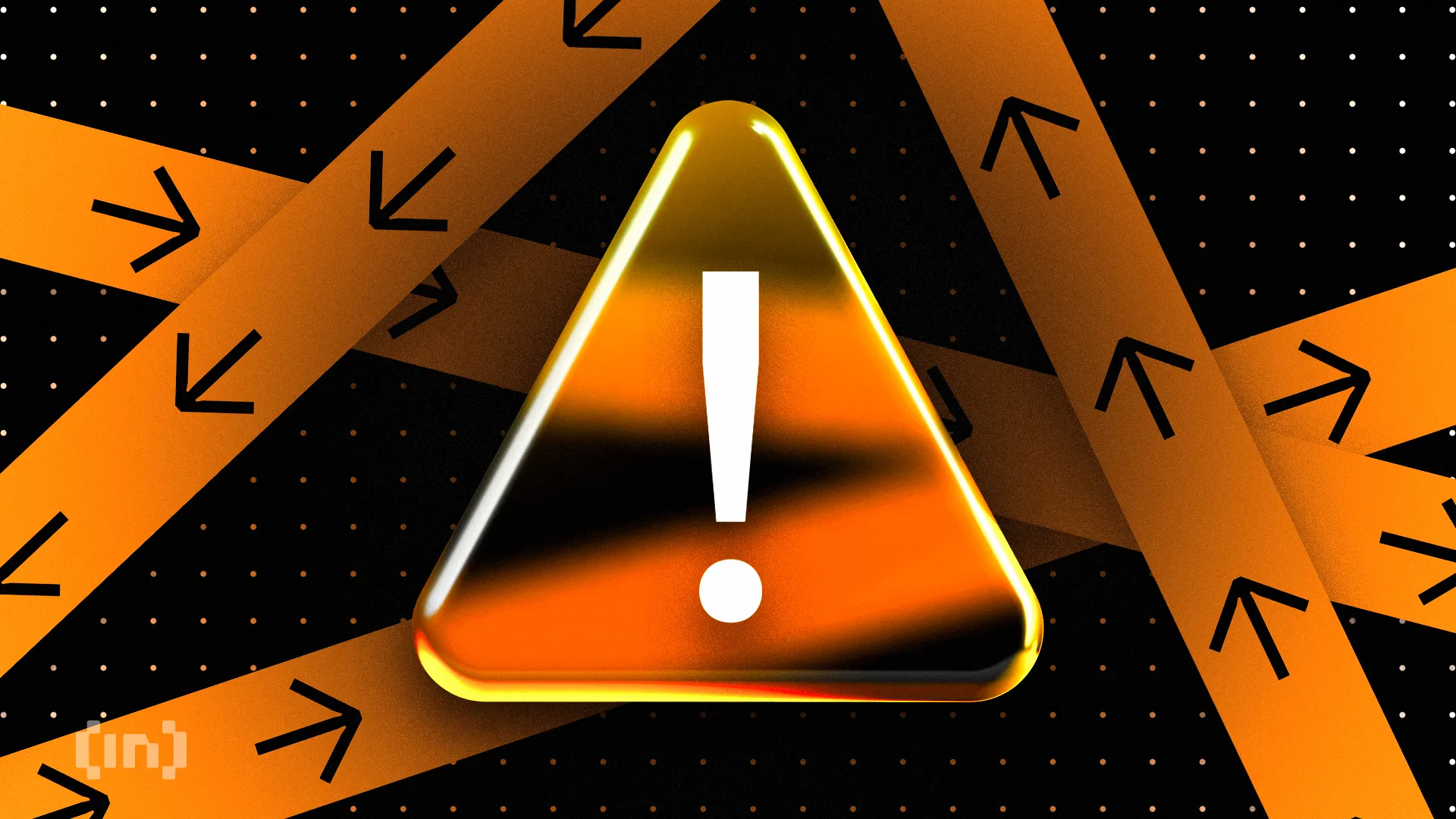
 Market22 hours ago
Market22 hours ago10 Altcoins at Risk of Binance Delisting
-

 Market21 hours ago
Market21 hours agoEDGE Goes Live, RSR Added to Roadmap








